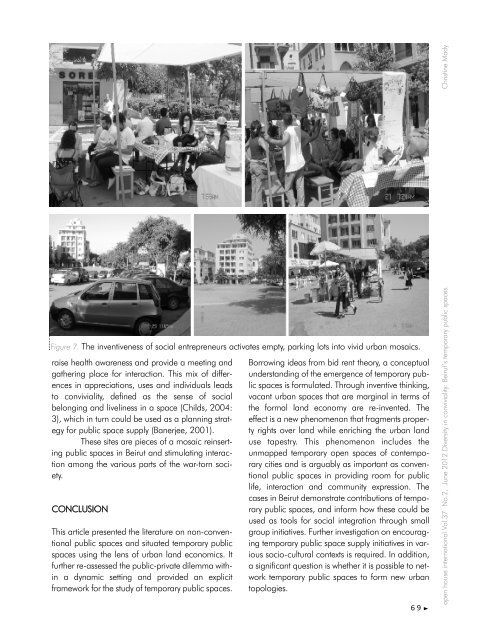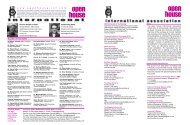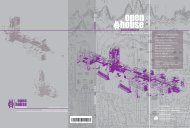Figure 7. The inventiveness of social entrepreneurs activates empty, parking lots into vivid urban mosaics. raise health awareness and provide a meeting and gathering place for interaction. This mix of differences in appreciations, uses and individuals leads to conviviality, defined as the sense of social belonging and liveliness in a space (Childs, 2004: 3), which in turn could be used as a planning strategy for public space supply (Banerjee, 2001). These sites are pieces of a mosaic reinserting public spaces in Beirut and stimulating interaction among the various parts of the war-torn society. CONCLUSION This article presented the literature on non-conventional public spaces and situated temporary public spaces using the lens of urban land economics. It further re-assessed the public-private dilemma within a dynamic setting and provided an explicit framework for the study of temporary public spaces. Borrowing ideas from bid rent theory, a conceptual understanding of the emergence of temporary public spaces is formulated. Through inventive thinking, vacant urban spaces that are marginal in terms of the formal land economy are re-invented. The effect is a new phenomenon that fragments property rights over land while enriching the urban land use tapestry. This phenomenon includes the unmapped temporary open spaces of contemporary cities and is arguably as important as conventional public spaces in providing room for public life, interaction and community expression. The cases in Beirut demonstrate contributions of temporary public spaces, and inform how these could be used as tools for social integration through small group initiatives. Further investigation on encouraging temporary public space supply initiatives in various socio-cultural contexts is required. In addition, a significant question is whether it is possible to network temporary public spaces to form new urban topologies. 6 9 open house international <strong>Vol</strong>.<strong>37</strong> <strong>No.2</strong>, June <strong>2012</strong> Diversity in conviviality: Beirut’s temporary public spaces. Christine Mady
Christine Mady open house international <strong>Vol</strong>.<strong>37</strong> <strong>No.2</strong>, June <strong>2012</strong> Diversity in conviviality: Beirut’s temporary public spaces. R EFERENCES ALCHIAN A, A. and DEMSETZ, H. 1973, The Property Rights Paradigm. The Journal of Economic History. <strong>Vol</strong>. 33/1, pp. 16- 27. ALEXANDER, E. R. 1992, A Transaction Cost Theory of Planning. Journal of American Planning Association. <strong>Vol</strong>. 58/2, pp. 190-200. ALONSO, W. 1960, A Theory of the Urban Land Market. Papers in Regional Science. <strong>Vol</strong>. 6/1, pp. 149-157. ALTAY, D. 2007, Urban Spaces Re-Defined in Daily Practices - ‘Minibar’, Ankara. In: Frers L. and Meier L. (eds.), Encountering Urban Places: Visual and Material Performances in the City. Ashgate, Aldershot, pp. 63-80. BUCHANAN, J. 1965, An Economic Theory of Clubs. Economica, New Series. <strong>Vol</strong>. 32/125, pp. 1-14. BUITELAAR, E. and NEEDHAM, B. 2007, The Cost of Land Use Decisions: Applying Transaction Cost Economics to Planning & Development. Blackwell, Oxford. CARR, S. et al. 1992, Public Space. Cambridge University Press Cambridge, New York, Victoria. CHILDS, M. C. 2004, Squares: A Public Place Design Guide for Urbanists. University of New Mexico Press, Albuquerque. DE SOLÀ-MORALES, I. 1995, Terrain Vague. In Davidson, C. C. (ed.), Any Place. Anyone Corporation, MIT Press, Cambridge, pp. 118-123. DORON, G. M. 2000, The Dead Zone and the Architecture of Transgression, City. <strong>Vol</strong>. 4/2, pp. 247-263. EDENSOR, T. 2007, Social Practices, Sensual Excess and Aesthetic transgression in Industrial Ruins. In Franck, K. A. and stevens, Q. (eds.), Loose Space: Possibility and Diversity in Urban Life, Routledge, London, pp. 234-252. FERLENGA, A. 2006, Inconsistent Vernaculars. In: Aymonino, A. and MOSCO, V. P. (eds.), Contemporary Public Space Un- <strong>Vol</strong>umetric Architecture, Skira, Milan, pp. 1<strong>37</strong>-139. FOLDVARY, F.E. 1994, Public Goods and Private Communities: the Market Provision of Social Services, Edward Elgar, London. 7 0 FRANCK, K. A. and STEVENS, Q. 2007, Tying Down Loose Space. In Franck, K. A. and STEVENS, Q. (eds.), Loose Space: Possibility and Diversity in Urban Life, Routledge, London, pp. 1- 34. FRUG, G. E. 1999, City Making: Communities without Building Walls, Princeton University Press, Princeton. GASTIL, R. W. and RYAN, Z. (eds.), 2004, <strong>Open</strong>: New Designs for Public Space, Van Alen Institute, New York. GEHL, J. and GEMZØE, L. 1996, Public Space, Public Life. Danish Architectural Press and the Royal Danish Academy of Fine Arts, School of Architecture: Copenhagen, Denmark. GROTH, J. and CORIJN, E. 2005, Reclaiming Urbanity: Indeterminate Spaces, Informal Actors and Urban Agenda Setting. Urban Studies. <strong>Vol</strong>. 42/3 March, pp. 503-526. HAJER, N. and REIJNDORP, A. 2001, In Search of New Public Domain: Analysis and Strategy, NAI publishers, Amsterdam. HARVEY, J. 2000, Urban Land Economics 5th ed. Macmillan, Basingstoke. HAYDN, F. and TEMEL, R. 2006, Temporary Urban Spaces: Concepts for the Use of City Spaces, Birkhäuser, Basel. HEIKKILA, E. J. 1996, Are Municipalities Tieboutian Clubs? Regional Science and Urban Economics. <strong>Vol</strong>. 26/2, pp. 203- 226. HORMIGO, P., MORITA, T. and CLUZEL, JS. 2007, Promenade into the Gap: Tokyo’s Impossible Void. Urban Design <strong>International</strong>. <strong>Vol</strong>. 12, pp. 3-19. KOOLHAAS, R. 1994, Delirious New York: a retroactive manifesto of Manhattan. Monacelli Press, New York. KOSTOF, S. 1992, The City Assembled: the Elements of Urban Form through History. Thames and Hudson, London. KROLL, L. 1991, Places versus Plazas. In Vernez Moudon A. (ed.), Public Streets for Public Use. Columbia University Press, New York, pp. 331-342. LOUKAITOU-SIDERIS, A. and EHRENFEUCHT, R. 2009, Sidewalks: Conflict and Negotiation over Public Space. MIT Press, Cambridge.





